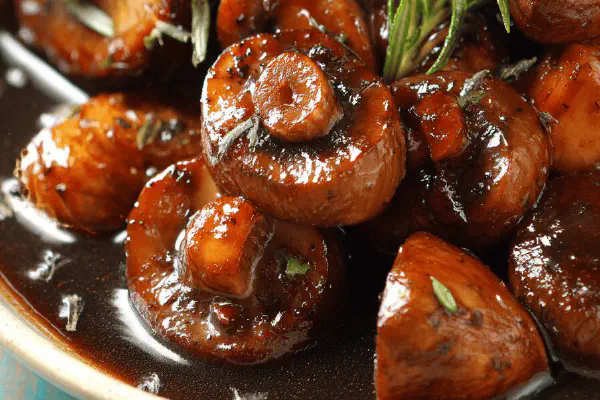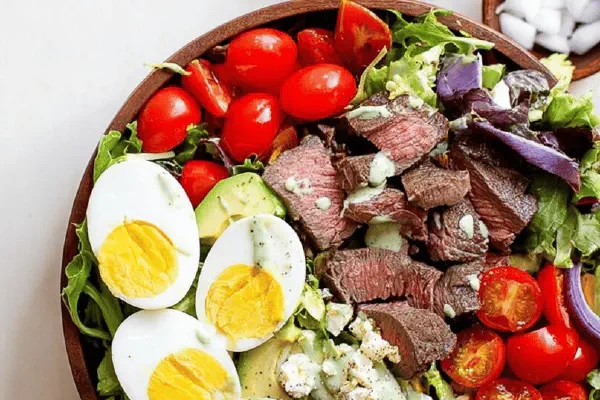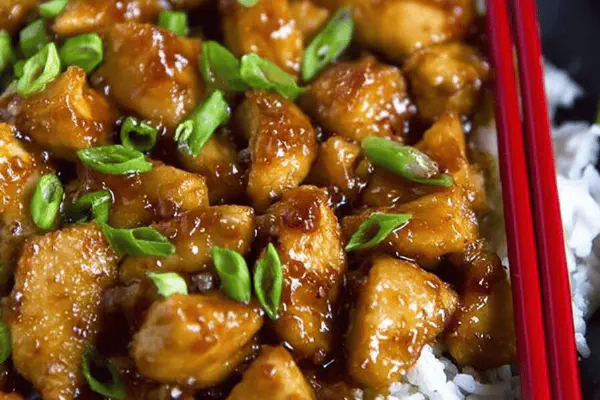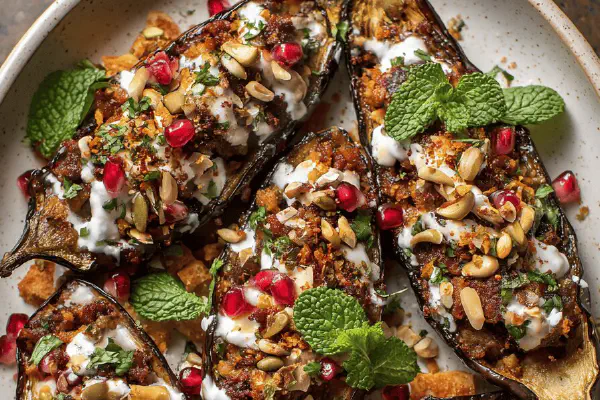Featured Recipe
Duck with Pomegranate Glaze
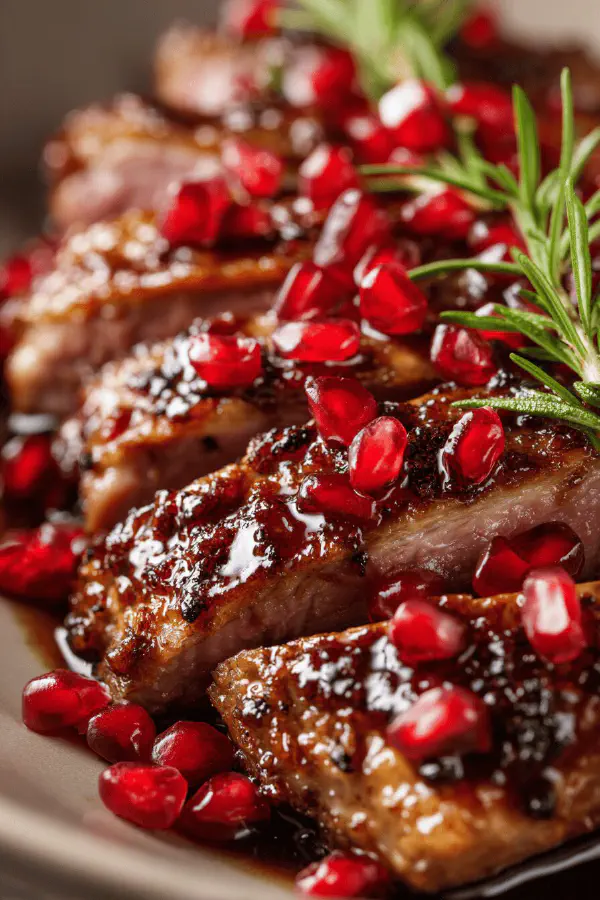
By Kate
"
Searing duck breasts with peppered scoring, melting fat slowly till skin crackles. Pomegranate-honey reduction stirred down to syrup, oil blended in with fresh herbs. Garnished with juicy pomegranate seeds and tangy fresh rosemary adding a woodsy twist. Duck sliced thin, rested well before serving. Replaced olive oil with walnut oil for a deeper nuttiness, swapped parsley for rosemary. Slightly less honey, more tartness held in tartaric punch of acid. Small timing changes to render fat just right and keep meat tender. Equally gluten, nut, egg, dairy free if you swap walnut oil back out. A method teaching to read meat, bubbles, aromas—not a watch timer.
"
Prep:
20 min
Cook:
35 min
Total:
55 min
Serves:
4 servings
main course
gluten-free
sauce
Introduction
Duck breasts. Thick layer of fat, rendered just right, skin crisping into crackly sheets. Finger pressing for doneness, no guesswork. Sweet-tart reduction bubbling, honey and pomegranate juice shrink into glossy glaze. Walnut oil swaps the usual olive; earthy, richer, fills aroma. Rosemary chopped fresh, not dried, adds piney punch echoing forest floor. Sear gently on cold pan starts, patience key to not scorching skin or undercooking. Slicing thin keeps chew manageable. Seeds pop fresh bite, scarlet jewels bursting on tongue. Backup pan tips, juice subs, little dosing adjustments weave flexibility. Kitchen sounds from sizzle to syrup drizzle, scents from fat rendering to fresh herb burst. Practical. No fluff. Just what works in action.
Ingredients
About the ingredients
Duck breast prep—scoring fat releases rendered oil during cooking but prevents curling. Pepper freshly cracked is essential; pre-ground dulls. Rare to medium rare preferred to avoid dryness, use touch test or thermometer for precision. Substitute walnut oil for olive to deepen flavor profile; if nut allergies present, grape seed oil is neutral choice. Rosemary chosen over parsley for its strong aroma balancing sweet reduction. Pomegranate juice reduction relies on watching viscosity; thickness near syrup stage signals readiness. Honey sweetens but use less if liking more acid; mix maple syrup or drizzle vinegar for sharpness. Pomegranate seeds for texture; frozen berries usable if fresh not in season.
Method
Duck
- Dry duck breasts with paper towel. Score fat gently in a diamond pattern keeping meat intact, no slicing through. Sprinkle cracked pepper evenly. Salt lightly; salt draws moisture but too much ruins skin crisping.
- Place duck fat side down in cold pan, no oil needed. Medium-low heat is key — fat renders slowly, skin turning golden, bubbling softly, not burning. Listen for steady sizzle, no shrieking. Render for about 18–20 minutes till most fat liquefies and skin puckers tightly.
- Flip breasts, heat up to medium, cook 5–7 minutes for medium rare. Press gently with spatula; gives feedback on firmness. Too soft — needs longer; too firm — overcooked.
- Rest on board loosely tented with foil at least 10 minutes. Resting lets juices redistribute, keeps slices moist versus liquid escaping on cutting.
- Meanwhile, pour pomegranate juice and honey in small saucepan, bring to boil. Reduce to low simmer. Watch: beads forming around edges turn syrupy, sticky coating on spoon indicates reduction done — roughly half original volume.
- Off heat, whisk in walnut oil and fresh rosemary. Walnut oil offers richness and earthiness, switch from olive for twist. Rosemary's piney aroma balances sweet sour glaze. No parsley here—too mild.
- Slice duck breasts thin against grain; thinner slices mute toughness, reveal medium rare pink. Arrange on plates, drizzle warm sauce generously over slices.
- Scatter pomegranate seeds over top. They add crunch, bright bursts, visual contrast. If seeds unavailable, fresh raspberries or red currants work as alternatives.
- Serve immediately. Duck skin should be crisp, interior juicy, sauce slick sheen with herb flecks. No lingering raw fat taste means rendering was done right.
- If skin not crisp enough, try briefly broiling skin side before resting but watch closely to prevent burning.
- Chicken or turkey breasts—use same method but reduce cooking time drastically; leaner meat cooks faster.
- Lacking pomegranate juice? Substitute cranberry or cherry juice with added squeeze of lemon for acidity.
- Honey too sweet? Replace half with maple syrup or a splash vinegar to keep balance.
- Pan too hot at start? Fat crisps too quickly, traps fat inside skin making leathery layers; cold start essential.
Sauce
Finishing
Troubleshooting
Technique Tips
Starting duck in cold pan allows slow fat melt, prevents hot spots and burnt skin. Scoring technique maximizes surface area without cutting meat, making skin crispy but meat juicy. Rendering fat properly produces crackle with no greasy film. Flip once, cook short time for interior, rest crucial—no skipping this step or juices spill on plate. Sauce reduction driven by visual cues and bubble action—no timers. Adding oil and herbs off-heat preserves delicate flavors and sheen. Slicing against grain breaks fibres, easier on teeth. Garnish last moment for freshness and crunch contrast. Tweaks suggested shift sweetness to acidity ratio and adjust herb power. Practical notes on substitutions for home cooks facing pantry limits. Avoid common error of rushing fat rendering or overcrowding pan to maintain even cooking.
Chef's Notes
- 💡 Starting cold pan is crucial. Fat melts slow. Golden skin but don't rush it. Listen for steady sizzle, no loud frying sounds. Once skin puckers, render longer. Keeps duck juicy.
- 💡 Scoring the fat? Do diamond patterns carefully. Avoid cutting through meat. Opens it up for rendering while keeping it intact. Pepper’s fresh crack is a must. Cuts dull flavor.
- 💡 Resting the duck is non-negotiable. Ten minutes minimum. Juices need time to settle. Slicing too soon? All those juices spill out. Create a mess and rubbery bites.
- 💡 Sauce reduction has visual cues. Watch for syrupy texture. Don't rely on time. If too sticky, add a splash of stock or water. Infuse more depth; avoids clumping.
- 💡 Pomegranate juice not handy? Cherry works. Add a squeeze of lemon if you're missing acidity. Need honey less sweet? Try maple or vinegar for less sugary balance.
Kitchen Wisdom
Why is my duck skin not crispy?
Check pan temperature. Cold starts work best. If too hot, skin burns fast trapping fat inside.
How can I store leftovers?
Wrap tightly in foil or use airtight containers. Fridge keeps for a few days. Reheat gently to keep skin crispy.
Substitutions for walnut oil?
Use grape seed oil as a nut-free alternative. Olive oil? Less depth. Still, functional but changes the flavor profile.
Any tips for serving?
Slice against the grain. Thin slices reveal medium rare nicely. Drizzle sauce warm, garnish right before plating for fresh contrast.
